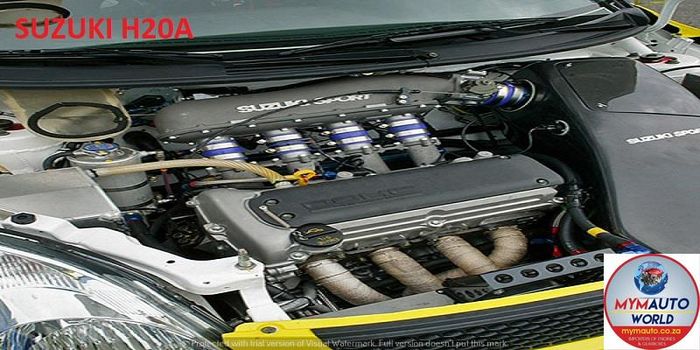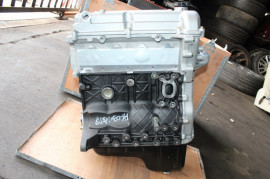Opel Corsa Engine: Everything You Need to Know Prior To Acquiring
Opel Corsa Engine: Everything You Need to Know Prior To Acquiring
Blog Article
Exploring the Inner Operation of a Compact Automobile's Engine System
As motorists, we often take for approved the intricate procedures that occur within the confines of our lorry's engine system. In this exploration of a small vehicle's engine system, we will untangle the inner functions of this mechanical harmony, shedding light on the secrets that drive us forward on our everyday trips.
Burning Process Summary
The combustion process in a small vehicle's engine system is an essential mechanism that effectively transforms fuel right into energy to power the car. This procedure takes place within the combustion chamber of the engine, where fuel and air mix, spark, and generate controlled explosions. The combustion procedure contains 4 main stages: intake, exhaust, compression, and power.
Throughout the intake phase, the piston moves downward, attracting a mix of air and gas into the combustion chamber. The following stage, compression, includes the piston relocating up, pressing the air-fuel mix to increase its potency. Subsequently, in the power phase, the spark plug sparks the pressed blend, causing a fast development of gases that forces the piston pull back. This downward motion creates the power needed to drive the lorry. In the exhaust stage, the burned gases are gotten rid of from the combustion chamber through the exhaust shutoff, preparing the chamber for the following cycle. This cyclic combustion process is basic to the procedure of a compact automobile's engine system, guaranteeing effective power conversion for propulsion.
Piston and Cylinder Communication

The piston's specific fit within the cyndrical tube is essential for maintaining ideal compression and protecting against power loss throughout combustion. Tight clearances in between the piston and cyndrical tube wall surfaces guarantee reliable sealing, allowing the piston to relocate efficiently without permitting gases to leakage past. Appropriate lubrication is likewise important to minimize rubbing and use between these components, enhancing longevity and efficiency.
In addition, the layout and materials used in manufacturing the piston and cyndrical tube influence engine effectiveness and longevity. Modern engines usually use light-weight yet resilient products like light weight aluminum alloys for pistons and cyndrical tube liners to minimize inertia and improve thermal effectiveness. Generally, the unified interaction between the piston and cyndrical tube is essential to the engine's functionality and total efficiency.
Fuel Shot System Capability
Gas injection systems in learn this here now portable automobile engines play an important role in specifically providing fuel to the burning chamber for controlled and reliable ignition. The fuel shot system functions by infusing fuel right into the burning chamber at the ideal minute during the engine's procedure (opel corsa engine). This accurate timing ensures that the gas blends uniformly with the air for correct burning, causing improved fuel performance and decreased emissions
There are mostly 2 kinds of gas shot systems made use of in compact lorry engines: port fuel injection (PFI) and straight fuel injection (DFI) PFI systems infuse fuel into the consumption port before the intake shutoff, while DFI systems inject fuel straight right into the burning chamber. Both systems have their advantages, with DFI using better fuel atomization and PFI supplying a more cost-efficient service.
Recognizing Engine Cooling Mechanisms
Effective operation of a small vehicle's engine counts greatly on the efficiency of its cooling mechanisms. The air conditioning system in a portable automobile normally consists of numerous elements working with each other to control the engine temperature. Understanding these engine air conditioning systems is vital for preserving the performance and long life of a small vehicle's engine system.

Exhaust System Components Explained
The optimum performance of a compact vehicle's engine air conditioning systems depends on a corresponding system called the exhaust system, which comprises numerous necessary components for making certain effective emissions and engine efficiency. The exhaust system includes components such as the exhaust manifold, catalytic converter, muffler, and tailpipe. The exhaust manifold gathers exhaust gases from the engine's routes and cyndrical tubes them to the catalytic converter. The hop over to these guys catalytic converter then converts harmful toxins in the exhaust into much less damaging emissions prior to releasing them with the muffler and tailpipe.
One vital component of the exhaust system is the oxygen sensing unit, which checks the oxygen degrees in the exhaust gases to help control gas consumption and make certain optimal engine performance. opel corsa engine. In addition, the resonator may be existing in some exhaust systems to reduce noise levels. Generally, the exhaust system plays a vital role in preserving engine performance, reducing dangerous discharges, and making certain a quieter driving experience for compact car proprietors

Final Thought
Finally, the compact lorry's engine system is a complex combination of elements that interact to facilitate the combustion process, transform gas right into power, and eliminate waste gases. Understanding the inner functions of the engine system, consisting of the piston and cyndrical tube communication, try this out gas shot system, engine air conditioning devices, and exhaust system elements, is crucial for maintaining optimal performance and effectiveness of the automobile.
The burning procedure in a small automobile's engine system is a critical mechanism that efficiently converts fuel into energy to power the vehicle.Fuel injection systems in small automobile engines play an essential duty in specifically supplying gas to the burning chamber for controlled and efficient ignition.There are mainly two types of fuel shot systems utilized in small car engines: port fuel injection (PFI) and straight fuel injection (DFI) Recognizing these engine air conditioning systems is crucial for preserving the performance and long life of a portable automobile's engine system.
The ideal functioning of a compact lorry's engine air conditioning systems depends on a complementary system recognized as the exhaust system, which makes up different vital components for ensuring reliable discharges and engine performance.
Report this page